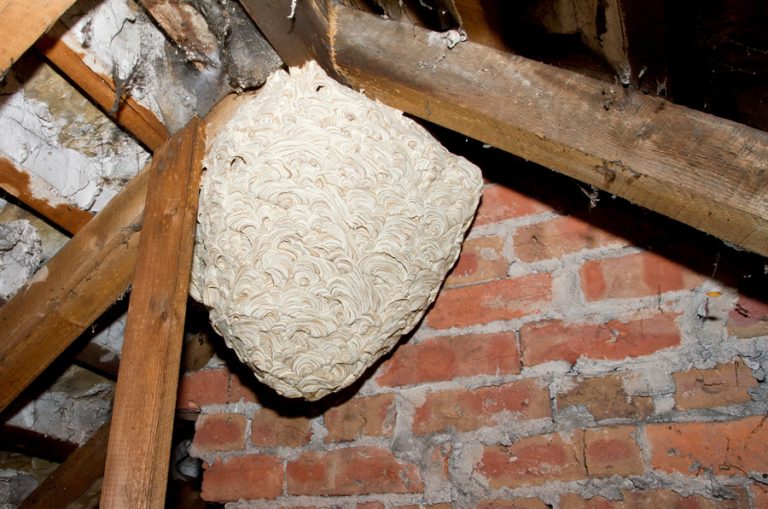Dealing with a wasp nest can be a daunting task, but it’s a necessary one to ensure the safety of your home and family. Whether you’re facing a small nest in your backyard or a larger infestation near your property, knowing how to effectively remove wasp nests is crucial. In this guide, we’ll explore everything you need to know about Wasp nest removal, from identifying signs of infestation to choosing the right removal method.
Understanding Wasp Nests
Wasp nests come in various shapes and sizes, depending on the species of wasp. Common types include paper wasp nests, which are typically umbrella-shaped and attached to eaves or branches, and yellow jacket nests, which are often found underground or in wall voids. These nests are constructed from a combination of wood fibers and saliva, providing a sturdy structure for the colony.
Signs of a Wasp Nest
Identifying a wasp nest early is key to preventing a full-blown infestation. Look out for physical signs such as the presence of a nest structure or an influx of wasp activity around your property. Additionally, pay attention to behavioral cues such as aggressive swarming or frequent sightings of individual wasps.
Why Wasp Nest Removal is Necessary
While wasps play a crucial role in controlling insect populations, they can pose serious risks to humans and pets. Wasp stings can cause severe allergic reactions in some individuals, leading to medical emergencies. Furthermore, wasp nests can cause structural damage to buildings and create unsanitary conditions if left unchecked.
DIY Wasp Nest Removal Methods
For small, accessible nests, DIY removal methods can be effective. Options include using natural repellents such as peppermint oil or vinegar, setting up traps baited with sweet substances, and wearing protective clothing to safely remove the nest. However, it’s essential to exercise caution and follow safety guidelines to avoid provoking the wasps.
Professional Wasp Nest Removal Services
In cases of larger or hard-to-reach nests, professional removal services may be necessary. Trained exterminators have the expertise and equipment to safely eliminate wasp nests without putting themselves or others at risk. Additionally, hiring professionals can save time and ensure thorough eradication of the infestation.
Cost Factors
The cost of wasp nest removal can vary depending on factors such as the size and location of the nest, the extent of the infestation, and the method of removal. On average, homeowners can expect to pay anywhere from $100 to $500 for professional removal services, with additional fees for emergency or after-hours service.
Steps Involved in Wasp Nest Removal
The process of removing a wasp nest typically begins with a thorough inspection of the property to identify the nest’s location and assess the level of infestation. Treatment options may include spraying insecticides directly into the nest or using specialized equipment to remove the nest safely. After removal, it’s essential to dispose of the nest properly and take measures to prevent future infestations.
Prevention Measures
Once the nest has been removed, taking proactive steps to prevent future infestations is crucial. This includes sealing any gaps or cracks in your home’s exterior, keeping outdoor garbage bins tightly sealed, and minimizing sources of food and water that may attract wasps.
Safety Tips
When dealing with wasp nests, safety should always be a top priority. Wear protective clothing such as long sleeves, pants, and gloves to minimize the risk of stings, and avoid disturbing the nest unnecessarily. If you or someone else is stung, seek medical attention immediately, especially if symptoms of an allergic reaction develop.
Environmental Impact
When choosing a removal method, consider the environmental impact of your actions. Opt for eco-friendly alternatives whenever possible, such as using natural repellents or hiring companies that prioritize sustainable pest control practices. By minimizing harm to the environment, you can ensure a more responsible approach to pest management.
Common Mistakes to Avoid
One common mistake homeowners make when attempting DIY wasp nest removal is underestimating the size or aggressiveness of the colony. This can lead to incomplete removal or accidental disturbance of the nest, resulting in stings and property damage. To avoid these pitfalls, always err on the side of caution and seek professional assistance if needed.
Legal Considerations
Before attempting to remove a wasp nest on your own, familiarize yourself with any local regulations or restrictions regarding pest control. Some areas may have specific laws governing the removal of protected species or the use of certain chemicals. By staying informed and following legal guidelines, you can avoid potential fines or penalties.
Conclusion
Removing a wasp nest can be a challenging task, but it’s essential for protecting your home and family from potential harm. Whether you choose to tackle the job yourself or enlist the help of professionals, prioritizing safety and thoroughness is key. By following the guidelines outlined in this article, you can effectively eliminate wasp nests and enjoy a safer, pest-free environment.

